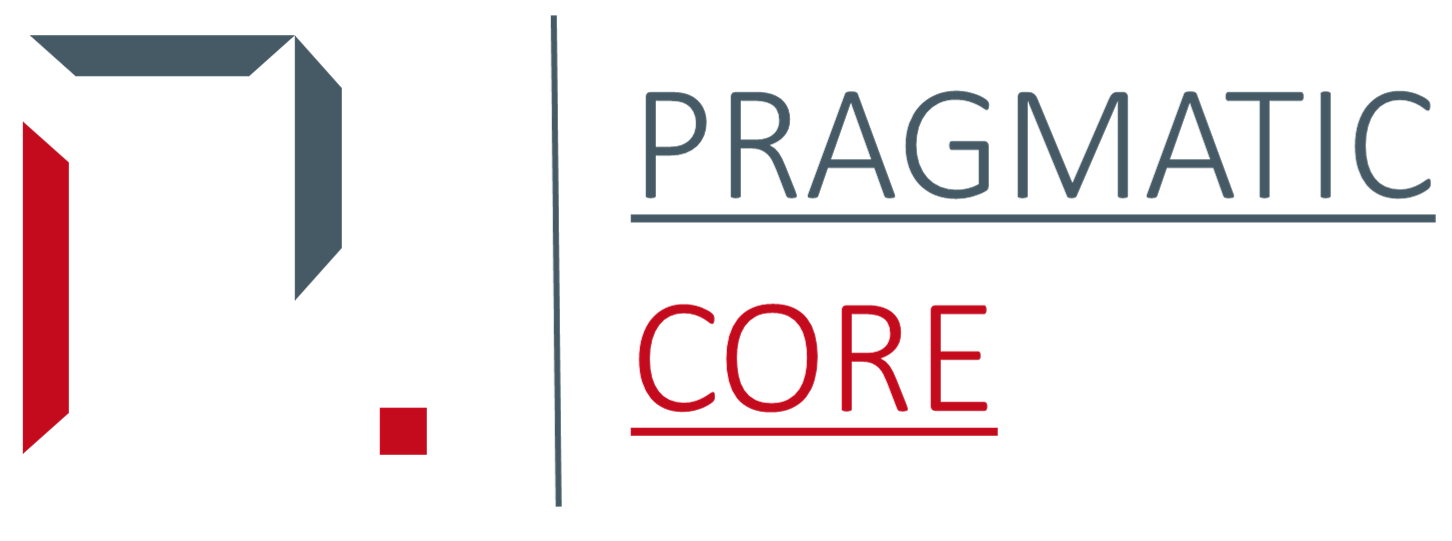Key Points:
- Pandemic Impact: The COVID-19 pandemic caused significant disruptions across industries, altering consumer behavior and supply chains.
- Industry 4.0 Transition: Industries are adopting Industry 4.0 technologies like IoT, robotics, and data analytics for enhanced productivity, sustainability, and resilience.
- Strategic Imperatives: To adapt, organizations should focus on building resilient operations, investing in digitalization, becoming data-driven, optimizing supply chains, and prioritizing sustainability.
The onset of the Covid-19 pandemic in early 2020 marked a dramatic turning point for industries globally. Overnight, the world economy ground to a halt as sweeping lockdowns were implemented and consumer behaviors shifted radically. Two years later, the ripples from this black swan event continue to fundamentally reshape economies and business sectors.
While the impacts are still unfolding, patterns are emerging around deep transformations across industries. The business continuity challenges of the pandemic accelerated adoption of technologies that have launched sectors into the era of 4.0. The resulting recalibration cuts across operations, business models, workforces, and sustainability focus. For enterprises looking to survive and compete post-covid, understanding these dynamics is now mission-critical.
Here we aim to provide an overview of the major industry shifts catalyzed by the pandemic and the transition underway to Industry 4.0. We will analyze changing industry dynamics, explain key Industry 4.0 technologies, discuss impacts on primary, secondary and tertiary sectors, and outline strategic imperatives for organizations seeking to adapt. These insights can help guide middle managers tasked with navigating disruption, future-proofing operations, capitalizing on opportunities, and leading teams through uncertainty.
Industry Dynamics Reshaped by Covid-19
The scale of economic impact from the Covid-19 pandemic was unprecedented across every major industry globally. To appreciate the magnitude of change, let us look at some key statistics:
Global GDP shrank approximately 3.3% in 2020, the worst drop since post-WWII. Around 100 million workers lost jobs, and trade volume declined 5.3%. US leisure and hospitality lost 8.2 million jobs, while brick-and-mortar retail saw a 14% decrease. E-commerce as a percentage of total retail sales jumped from 16% to over 24% in the US – a decade’s worth of growth. Edtech firms like Udemy and Coursera witnessed student enrollment boom 4-6X during lockdowns. Zoom’s customer base grew 30X.
These numbers underscore how consumer behaviors transformed virtually overnight under lockdowns, necessitating digital adoption across spheres of life. For middle managers, this meant dealing with unprecedented disruptions to demand, supply chains, budgets, workforces, and operations. The challenge was not only ensuring continuity, but rapidly adapting to new market realities.
Critically, many pandemic-induced shifts will persist beyond lockdowns easing. Surveys indicate 75% of new e-commerce consumers expect to continue shopping online post-crisis. Telehealth and remote collaboration usage will remain stickier. There is no “back to normal” since pre-covid dynamics have changed indefinitely across industries.
Fundamentally Altered Industry Dynamics Include:
Operations: Global supply chains were disrupted by both lockdowns and extreme weather events, exposing lack of resilience. Localization, stockpiling, and risk analytics are now essential to build in redundancy. Facility layouts are being reconfigured for flexibility via modular equipment.
Business Models: Many sectors saw demand fluctuate wildly almost overnight during the pandemic. Agility became paramount, accelerating “as-a-service” models that enable variable scaling. Maintenance and sanitization costs also rose, making leasing physical assets more appealing.
Consumers: Online purchasing habits are now entrenched across demographics. Surveys also show rising consumer demand for ethical brands, sustainability, and purpose – particularly among Millennials and Gen Z.
Workforce: Pressures to adopt automation and flexible work arrangements have intensified across sectors. Offering workplace flexibility is now seen as key for talent retention by many HR departments.
Sustainability: The risks exposed by supply bottlenecks and weather events have put sustainability concerns into sharper strategic focus. Investment is rising in renewable energy, circular models, and ESG practices.
Understanding Industry 4.0
The pandemic environment provided urgent incentive for enterprises across sectors to adopt technologies that have been emerging under the Industry 4.0 umbrella for years. The capabilities defining 4.0 include:
Internet of Things (IoT): Networks of connected smart devices embedded with sensors that generate and communicate data. In manufacturing, this enables real-time data collection across production lines.
Advanced Robotics: Next-generation robots that are safer, flexible, intelligent, and collaborative due to advances in sensors, AI, and mechanics. Makes automation accessible beyond large manufacturers.
Big Data & Analytics: Leveraging AI and machine learning to derive insights from massive, real-time data sets from IoT, enterprise systems and other sources. Enables data-driven decisions.
Additive Manufacturing: Industrial 3D printing that enables on-demand, localized, customized production. Accelerates design iterations and part replacement.
Augmented Reality: Digital information and graphics overlaid onto the real environment via headsets or mobile devices. Used for training, design previews, and remote expert support.
Simulation: Virtual replicas of systems and processes that mirror physical assets using real-world data. Used to prototype, troubleshoot, and optimize before deployment.
Together, these Industry 4.0 technologies offer myriad benefits:
-
-
- Increased productivity, speed, efficiency and flexibility
- Higher quality products and reduced defects through automation
- Cost reductions from optimized material and energy use
- Minimized downtime and supply chain risks
- Sustainability gains from resource efficiency
- Safer workplaces with collaborative robots
-
Tangible use cases now exist where Industry 4.0 solutions have been successfully deployed across industrial sectors. For example, automotive plants leverage IoT and predictive analytics to minimize costly downtime. Plastic packaging companies use 3D printing to quickly iterate prototypes. Farms employ smart sensors, drones and GPS for precision agriculture. These prove the technologies have matured beyond the hype phase.
Impacts on Key Sectors
Let us examine how core industrial sectors are integrating and benefiting from Industry 4.0 capabilities in the post-pandemic environment.
Primary Sector:
Precision agriculture powered by data aggregation and analytics is revolutionizing farming and livestock operations.
Key enablers include:
-
-
- Sensors monitoring soil conditions, crop growth, equipment performance and more
- GPS and mapping tools to track inputs and guide targeted action
- Drones and satellites collecting data over vast acreages
- Predictive analytics to model outcomes and optimize practices
-
Benefits encompass higher yields, resource efficiency, cost reductions, and sustainability. For primary sector players impacted by labor shortages, climate change, and land constraints post-covid, Industry 4.0 techniques can provide a crucial lifeline.
Secondary Sector:
For manufacturing, the pandemic necessitated urgent deployment of automation and data-driven technologies.
Key use cases include:
-
-
- Collaborative robots to enable operations resilience against disruptions and labor volatility. 3% of new robot orders now include cobot capabilities.
- Industrial IoT platforms to gain end-to-end visibility across production lines and enable predictive maintenance. The Industrial IoT market is projected to reach $100 billion by 2027.
- Additive manufacturing to facilitate flexible, localized, on-demand production runs. The 3D printing market hit $13 billion in 2021 and is expected to hit $34 billion by 2028.
- Simulation and digital twin technologies that optimize systems prior to implementation. Simulation software market is estimated to hit $26 billion by 2029.
-
Together, these techniques facilitate mass customization, rapid design iteration, automation, and data-driven resilience. For automotive, electronics, and other manufacturing sectors, Industry 4.0 is key to surviving disruptions.
Tertiary Sector:
For retail, banking, services and other tertiary sectors, Industry 4.0 means adapting business models by harnessing emerging technologies.
Examples:
-
-
- Retailers rapidly scaling omnichannel commerce using advanced analytics to optimize across brick-and-mortar and online.
- Banks adopting AI chatbots, biometric authentication, and robotic process automation to serve customers 24/7 through any channel.
- Field service companies equipping technicians with IoT sensors, AR glasses, and other tools to enable remote expert support.
-
Across the tertiary sector, data-driven platforms and business model innovation are imperative. Companies adept at synthesizing real-time data have outsized competitive advantage in the post-covid reality.
Strategic Imperatives for Organizations
Given the scale and permanence of changes underway, what are the key strategic shifts imperative for enterprises across sectors seeking to recalibrate?
Build Resilient Operations by Adopting Modularity and Flexibility
Businesses must prioritize modular equipment and processes that can be reconfigured based on demand fluctuations. Cloud infrastructure and as-a-service models enable capacity to rapidly scale up or down. Contingency plans and crisis scenario playbooks also hedge risks.
Aggressively Commit Resources to Digitalization and Industry 4.0 Capabilities
Enterprises need to decisively invest capital and talent into emerging technologies like IIoT, advanced analytics, robotics, etc. Workforces require reskilling on digital capabilities through training programs and hands-on learning. If needed, acquire startups to quickly gain capabilities rather than playing catch up.
Become a Data-Driven Organization
Leveraging IIoT platforms to aggregate data across the value chain provides end-to-end visibility. Build in-house data science and analytics expertise through new hires or upskilling. Implement decision frameworks that integrate insights from operations data, market signals, and risk indicators.
Optimize Supply Chains via Dual Sourcing, Nearshoring, and Inventory Buffers
Supply chain resilience requires diversifying sourcing across geographies to avoid single points of failure. Where feasible, nearshore production. Continuously analyze risks and model scenarios to identify vulnerabilities. Maintain inventory buffers to absorb disruptions, but avoid over-optimization.
Make Sustainability a Strategic Priority
Leading companies set corporate sustainability targets around GHG reduction, water stewardship, circularity, equity and more. They optimize production through product life extension business models and technology. Renewable energy, electrified equipment, and green inputs are prioritized. Progress and achievements should be measured and reported.
Guiding the Transition
Executing these strategic shifts will require determination, wise investment, and cultural change. Some recommendations for guiding organizations through the transition:
Secure executive leadership commitment by demonstrating ROI and tying initiatives to corporate objectives. Address skills gaps through recruitment, training programs, and empathy for employee learning curves. Start with limited pilots to build confidence and de-risk scaling. For large initiatives, employ change management tactics like communication, training, and celebrating milestones. Budget realistically for multi-year transitions, knowing benefits will compound over time.
For middle managers, thoughtful stewardship from strategy through implementation will be key. By maintaining realistic timelines, addressing capability gaps, and empowering teams, managers can ensure new initiatives take root.
Strategic Reflection
In conclusion the global pandemic has necessitated major strategic recalibration across sectors by accelerating adoption of Industry 4.0 capabilities. As this technology-led disruption continues unfolding, companies must commit to business model adaptation, digital fluency, supply chain resilience, and sustainability to stay competitive. With wise investments and proactive change management, the crisis can transform into an opportunity to build the smart, data-driven, purpose-driven enterprise of the future. There is no going back – only recalibration ahead.


